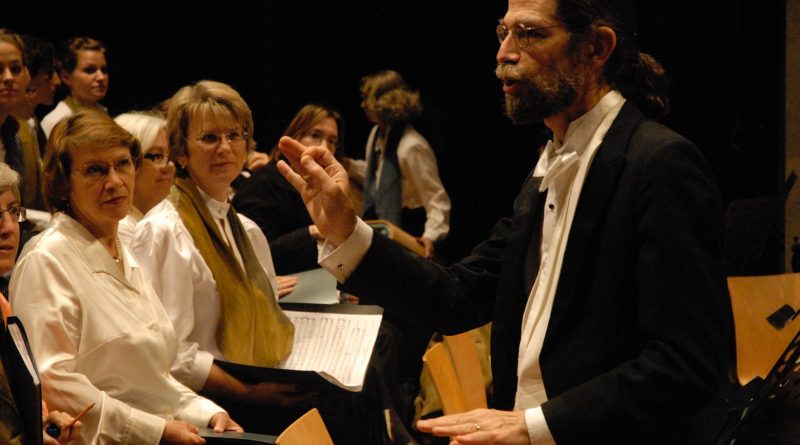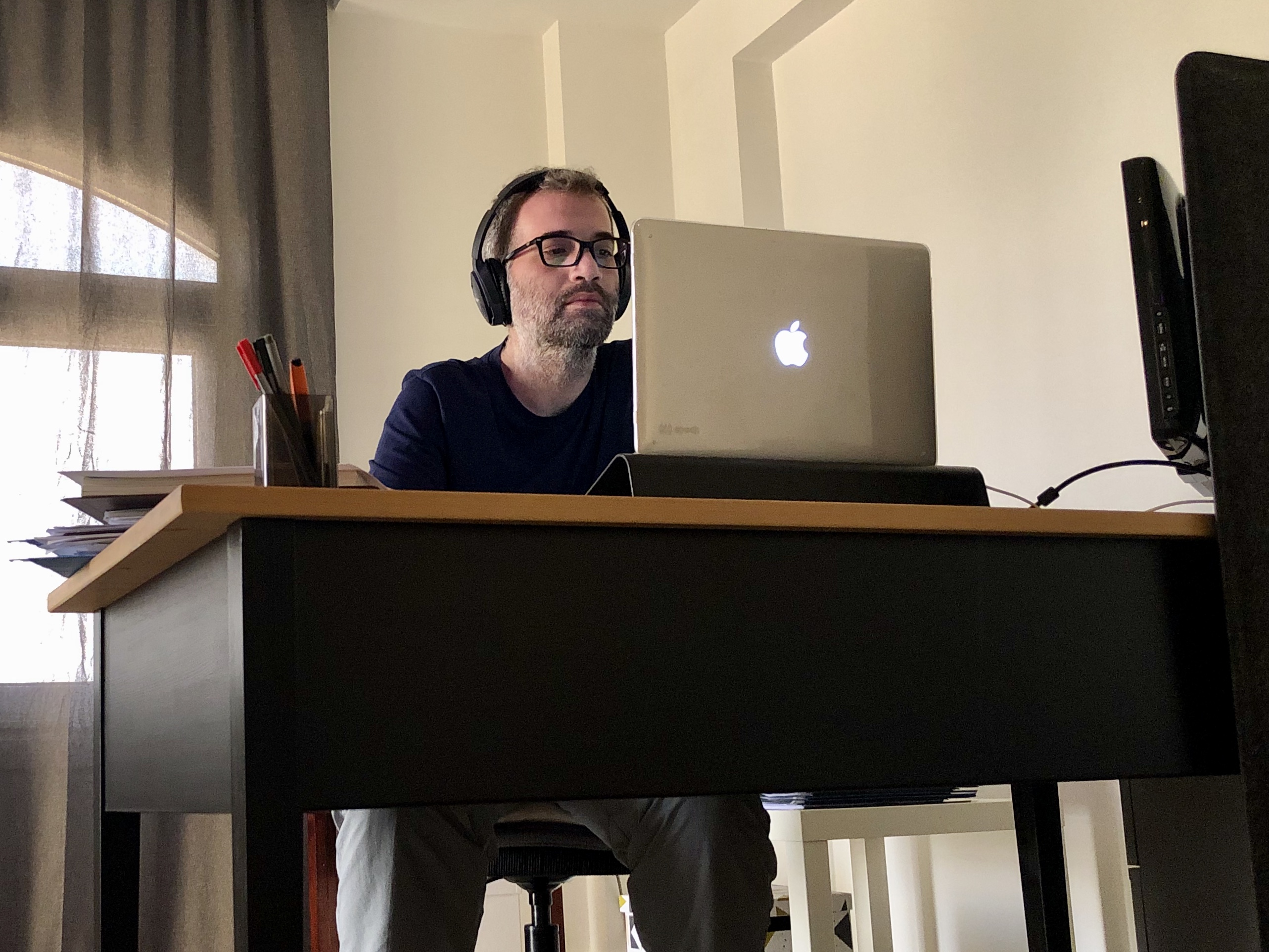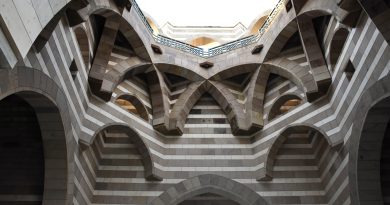Beyond the Notes: The Essence of Music Interpretation
Edited by: Farah Mohamad
Photo Taken By: Kathrine Sombold
Music is deeply intertwined within society, becoming an informal language of its own, which opens the door for individual interpretation.
AUC Professor of Music John Baboukis, who specializes in medieval and renaissance music, gave an interactive presentation on the interpretation of music hosted by the School of Humanities and Social Sciences (HUSS) at the Tim Sullivan Lounge.
The talk, which was open to all majors, aimed to expand the knowledge of the attendees on the intricate connections between the performer, the conductor, and the composer, as well as its relevance in the process of music interpretation.
Baboukis is also the director of the AUC Chamber Singers and the conductor of the Cairo Choral Society, a chorus group affiliated with the university.
“When I go to an art museum, I look at the paintings, and I walk through the museum, I always feel like I know more about art when I come out, that I appreciate it better just from having looked at it,” Baboukis told The Caravan.
As Baboukis explained, listeners must heavily acquaint themselves with a piece of music to better contextualize it, and that all begins with the basics: music notation.
He explained that listeners should understand each note’s role within the music sheet and the importance of not reading music, but instead feeling it.
“You don’t read music, [but] look at it and make intuitive sense of what it does,” he said.
He explained the essential nature of music composition, as music is composed of sounds with different layers that slowly turn into a harmonized conversation between the organization of different sounds and the person playing the instrument.
“The arrangement [of the music] adds a layer of meaning that isn’t inherent in the original sounds,” said Baboukis.
He followed that with a brief example of his harpsichord, which is an instrument that resembles a grand piano with strings attached to the perpendicular keyboard.
He used it multiple times to provide visual and auditory explanations—explaining the dichotomy between the performer and the composer.
“The performer is who produces the actual sounds, and the composer creates the patterns that the piece conforms to,” he said.
Bakboukis introduced an ever-present dilemma, which he constantly referenced within his presentation, and that is how one is expected to learn classical pieces if the people who originally composed them are no longer alive. That, he explained, creates a leeway for performers to make creative decisions when curating a compelling performance.
“When you listen to enough music, you learn about it, and it makes sense to you as a musical language. If you dropped a Western audience at a Umm Kulthoum concert, they would make no sense out of it; it would not appeal to them. But you put that Western audience in a bunch of taxi cabs in Cairo for a few years so that they hear it every night; after a while, it does begin to make sense,” he said.
Baboukis explained that conductors are crucial to guiding the performance and mediating the harmony between the performers and the audience.
“The audience comes with certain information or with a certain understanding of music and certain ideas. That is going to affect the way that they would perceive the music, and they’re also going to affect the performance,” Baboukis said.
Toward the end of his presentation, Baboukis provided a visual representation of one of his well-known early pieces, “Symphonies of Cairo,” to contextualize all that has been discussed.
“The movement from ‘Symphonies of Cairo’ was structured in a classic, a regional classical form, the ‘Samaay Thakeel’ [heavy auditory rhythm] as [Baboukis] mentioned,” Ashraf Fouad, a composer and professor of music in the Department of the Arts, told The Caravan.
Baboukis introduced the concept of minimalism within the musical sphere during his presentation, which allows for the repetition of shorter segments within the piece.
He mentioned how he intersected it within his work, taking a modern musical language and applying it to a more classical form.
“This is something that is very much attached to the region and not to classical music, so I find that this movement is very historic because, in symphonies, I do not think that any composer incorporated this form as a movement in a symphony,” said Fouad.
Karim Abdelhakam, a Helwan University alumnus with a master’s degree in Software Engineering, was among the event attendees. He told The Caravan that he had been singing under the baton of Baboukis for two years.
Given his educational background, he aims to approach music from a technical perspective.
“I always think there’s an objective metric, and apparently, there isn’t. Things are quantifiable, and music is a bunch of frequencies,” said Abdelhakam.
He explained that this was the first time he was able to dig deep into Baboukis’ impression of Arab music and understand how his brain recognized good music.




